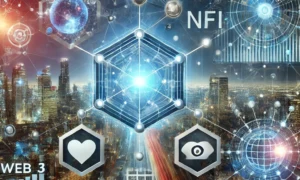A helpdesk is a centralized system or software solution that organizations use to manage and streamline their customer support and service operations. It serves as a central point of contact for customers, employees, or users to submit their inquiries, issues, or requests for assistance. The primary objectives of a helpdesk are to provide efficient and timely support, resolve problems, and improve overall customer satisfaction.
Here’s why you need a helpdesk and some key features to look for when selecting one:
Why You Need a Helpdesk:
1. Efficient Issue Management: A helpdesk helps you manage customer inquiries and issues efficiently by organizing them into a structured workflow. This ensures that each issue is addressed promptly and consistently.
2. Improved Customer Support: A helpdesk enables you to deliver better customer support by providing a central point of contact where customers can report problems, ask questions, and seek assistance.
3. Knowledge Management: Many Help Desk Solution systems include a knowledge base feature where common issues and solutions are documented. This empowers customers to find answers on their own and reduces the workload on support teams.
4. Data Analysis: Helpdesk software often comes with reporting and analytics tools that allow you to analyze customer issues, track agent performance, and make data-driven decisions to improve your support operations.
5. Automation: Helpdesk systems can automate routine tasks and processes, reducing manual workload and improving response times. Automation can include routing tickets to the right agents, sending automated responses, and more.
6. Scalability: As your organization grows, a good helpdesk system can scale to accommodate an increasing number of users, support channels, and inquiries.
7. Consistency: Helpdesk solutions enforce consistent handling of customer inquiries, ensuring that all cases are managed according to established standards and processes.
Features to Look for in a Helpdesk Solution:
➤Ticket Management: The ability to create, track, and manage customer issues and requests as tickets is a fundamental feature of any helpdesk.
➤ Email Integration: Seamless integration with email systems allows customers to submit issues via email and agents to respond through the helpdesk.
➤ Knowledge Base: A knowledge base enables you to create and maintain articles, FAQs, and documentation that customers can access for self-service.
➤ Reporting and Analytics: Tools for generating reports and analyzing support data are essential for making informed decisions and improving support operations.
➤ Automation: Look for features like ticket routing, automated responses, and workflow automation to streamline processes and reduce manual effort.
➤ Multi-Channel Support: Ensure the helpdesk can handle support inquiries from various channels, including email, web forms, chat, and social media.
➤ Integration: Consider whether the helpdesk can integrate with other systems, such as CRM software, to provide a comprehensive view of customer interactions.
➤ Customization: The ability to tailor the helpdesk to your organization’s specific needs through customization and branding options is valuable.
➤ Security and Compliance: Ensure that the helpdesk solution includes security features to protect customer data and complies with relevant data protection regulations.
➤ User-Friendly Interface: An intuitive and user-friendly interface is crucial for both agents and customers to navigate the helpdesk effectively.
Selecting the right helpdesk solution for your organization involves evaluating your unique needs, budget, and the scalability of the system. By considering these factors and the essential features mentioned above, you can choose a helpdesk that helps you deliver exceptional customer support and streamline your service operations.













































